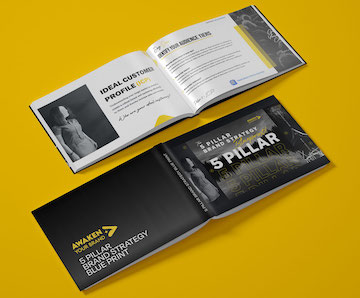Often business owners do not really understand why their business is not doing we well as it should. The culprit that springs to mind is the product or service. This is the easiest to blame and a lot of the business owners spend 80% of their time trying to tweak the product/service or play with the pricing etc. But in reality, the problem is not the product/service but rather other factors that are hard to identify and those that most people tend not to acknowledge.
In the coaching world, there is a concept called the GROW model which is simple and effective structure for helping some one explore where they are now, where they want to be and how to get there. The same model can be used to analyze your business and troubleshoot it towards growth and success. We use this quite a lot when we work with our brand strategy clients where we implement our Brand Immersion Marketing framework.
So what is the GROW model?
GROW stands for the following:
Goals
Reality
Options
Way forward
Grow actually helps to plot a journey from where the person wants to be (the GOAL). Where they are right now (the REALITY). The main ways the person has for getting to the goal (the OPTIONS). And the specific options the person chooses (the WAY FORWARD).
Step 1: The GOAL
The first thing a business owner needs to do is establish the goal – be it either in terms of mind share, market share, revenue, sales, size of the company etc. You would be suprised at how many business owners do not have clear goals for the their business. “Making more money” is not a clear goal. And neither is “increasing sales”. Your goals should be clear and vivid. They should be clear and spelled out.
Take a moment to sit down and write out an essay about how you imagine your brand would be in 3 years time or 5 years time. Write it like a story. Write as if you can see yourself and your business in 3 years time. Do you see your business is 10 times the current size? Does it have 4 times the number of employees? Does it have X time the revenue? Perhaps you have global offices? Don’t be afraid to think big – but do ensure that you do not turn it into a fantasy. Try and maintain a grip on possibilities.
Step 2: Finding the exisiting REALITY
Mang business owners tend to avoid asking the tough questions about the state of their business and brand. They do not question the realities of their brand visual language, their messaging or brand strategy. An example that comes to mind is how people with financial difficulties tend to only approach a debt counsellor years after years of avoiding the reality – in the hopes that it would go away. It rarely does!
The same way, avoiding asking the tough questions about the status of your brand and the strategy you are using to bring in sales and revenue would lead disaster. But by understanding where they are in terms of aligning with the GOAL (target audience), they can then look at what OPTIONS they have to clarify their message, create a robust positioning stragegy and improve their visual messaging.
The following tough questions needs to be asked:
- Do we know what the current perceptions are towards our brand?
- What are the brand’s strengths anf resources that can support progress?
- What are the business owners concerns, fears and insecurities towards their brand?
- What kind of strategy and messaging has been done do far and what has been achieved?
- What has not been done do far?
- What kind of support does the business owner have?
- What kind of barriers exist that prevent the brand from progressing?
- What has prevented the business owner from tackling these issues previously?
With this information explored, the business owner will have clarity on where their brand is right now and this in itself is often a very liberating experience for both the business owner and the brand itself.
Step 3: Developing OPTIONS for action
If the REALITY is where you are right now and the GOAL is where you want your business to be, then OPTIONS are the solutions that could possibly work to get your brand to the goal.
To help with identifying the options start with identifying the target audience and understanding them. This is the crucial starting point with out which the brand building process would feel aimless and confused. Ensuring clarity and commitment to the core customer base is the primay stage of any brand building. Once the core buyer persona has beeb established the business owner can proceed to finding out where the brand messaging currently is in relation to the world view of the target audience.
Identify the kind of messaging that would appeal to the target audience. This will become easier once you have identified your core buyer personas. Instead of a bunch of random marketing messages and campaigns, look to create a consisten and cohesive brand story and message that communicates your core values to your audience and makes you an authority in your field.
Work on the following items and turn them into powerful OPTIONS to help your brand get to the GOAL:
- Explore your current brand positioning strategy and see if it makes sense
- Evaluate your brand name and see if it is dragging your brand down
- Look a close look at your brand identity and see if it is making your brand look cheap and untrustworthy
- Analyze your website to see if it actually working against your brand
- Identify which of your social media channels are working in your favor and which are making your brand look stupid
- Sift through all your marketing campaigns to see if they are really ideal for your business or are they simply wasting money
Step 4: The WAY FORWARD
Once you have compiled a list of OPTIONS, you can then agree with yourself about the WAY FORWARD. Choose which of the above OPTIONS you would like to tackle first. Of course there are some logical ones – if they are the culprits – which should be dealt with before anything else. For example, most often the brand positioning strategy is the first one to be tackled and nailed since that would dictate the path of the rest of them.
Work through all obstacles and do not get bogged down by endless lists. Keep clarity at the top of your priority. Keep it simple.
I hope this primer gives you a workable model to start analyzing your brand and helping you start growing your business and achieve success.

